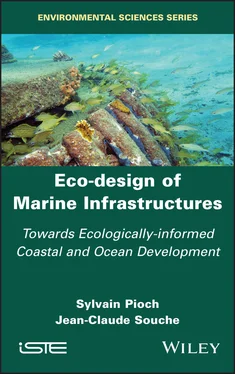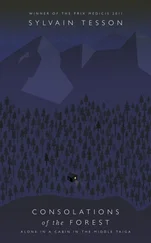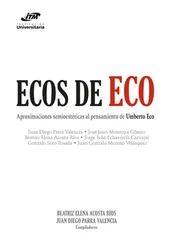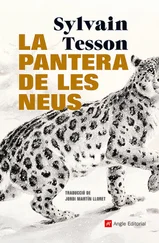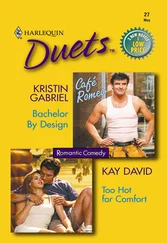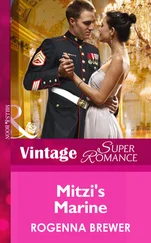Summary diagram of the constituents of concrete (J.-C. Souche) Figure 3.24. Methodology of the performance approach (from CIMbéton documents). ...Figure 3.25. Methodological parallel between the performance approach (in red) a...
4 Chapter 4Figure 4.1. Photos of colonization of concrete disks after immersion in the port...Figure 4.2. Test tubes in a controlled environment at the Ifremer marine experim...Figure 4.3. References and feedback presented in this book. Geographical locatio...Figure 4.4. Map of Mayotte and in the blue ellipse the DWS pipeline between Mamo...Figure 4.5. Boundary flag indicating the underwater route (yellow dashes) of the...Figure 4.6. Cubic concrete weights classically used in marine civil engineering ...Figure 4.7. Sketch of an “écocavalier” with habitats created to reduce the impac...Figure 4.8. Ground plan of the route and distribution of the different types of ...Figure 4.9. Reinforcement of the pipe weights, functional drawing (design: J.-C....Figure 4.10. Monitoring of the colonization of structures in 2009 after one mont...Figure 4.11. Ecocavaliers for ballasting the Mayotte marine pipeline (photo: R. ...Figure 4.12. Immersion of artificial reef by Seaboost (photo: R. Dumay) Figure 4.13. Developing rocky seabeds with artificial fishery habitats ecologica...Figure 4.14. Example of an artificial habitat mimicking a natural drop-off shelt...Figure 4.15. Example of increase in total biomass through the installation of ar...Figure 4.16. Schematic of the design of artificial habitats inspired by nature t...Figure 4.17. Ecological functions for the maintenance and development of target ...Figure 4.18. a) Immersion of two prototype structures off Agde in September 2009...Figure 4.19. Adult seabream ( Diplodus sargus) during the breeding season, settle...Figure 4.20. Proposed overall concept of port eco-design from 2009 where the por...Figure 4.21. Map cross-referencing ethological information and the different art...Figure 4.22. Pilot applications of eco-designed dock for port structures with th...Figure 4.23. Photomontage of the Calais Port 2015 extension project10 Figure 4.24. Three-part segmentation of the north jetty for the protection of th...Figure 4.25. Photo of seabass shelter, in a typical habitat adapted to resting a...Figure 4.26. General view of the Sand Motor project site (photo: M. Stive) Figure 4.27. Locations of ECO Armor Blocks and standard blocks on the dike (Perk...Figure 4.28. Comparative colonization of standard “control” Antifer blocks (left...Figure 4.29. Headland Park seawall and detail of a basin created in sandstone, i...Figure 4.30. Ospedaletti Ecopode™ and Accropode™II. In this project, the Ecopode...Figure 4.31. Examples of colonization of artificial blocks of embankment shells ...Figure 4.32. View of the intertidal basins on the dike (photos: P. Hymery, Suez ...Figure 4.33. Location of the immersion site for the eco-designed artificial reef...Figure 4.34. Immersion sites for the structures (red square) at Ricantu bay (sou...Figure 4.35. Eco-engineered mooring for cardinal beacons (photo: J.-C. Souche) Figure 4.36. Concrete elements cast by Isula Services: a) counter-mold; b) mold ...Figure 4.37. Eco-designed artificial reefs and environmental monitoring (Gulf of...Figure 4.38. Plan view of the Principality of Monaco in 1880 (source: Princely G...Figure 4.39. Plan view of the Principality of Monaco in 1970 (source: Princely G...Figure 4.40. Artist’s plan view of a) the project and b) its waterfront (source:...Figure 4.41. Artist’s view of a) the harbor and b) the urban context (source: Pr...Figure 4.42. Layout of the offshore extension of the Portier cove (light blue ha...Figure 4.43. Elevation of the caissons with the planned eco-design provisions (s...Figure 4.44. Details of the “Amur” die-cutting on the posts of the Jarlan caisso...Figure 4.45. a) Grooving of the caissons, and b) sanded concrete surfaces (sourc...Figure 4.46. a) Diagram of the functioning of the ecosystem surrounding the arti...Figure 4.47. Artist’s view of the structures integrated into the design of the f...Figure 4.48. a) Effects of anchors on the seabed of the Caribbean coast; b) wild...Figure 4.49. Natural habitat-inspired skirts attached to buoys to prevent access...Figure 4.50. Eco-designed mooring system (design: S. Pioch, drawing: J.-C. Ascio...Figure 4.51. Juvenile colonization of an ecologically designed mooring system af...Figure 4.52. Location of the three sites (document: S. Delavigne, source: Caraïb...Figure 4.53. a) “Prison bar” effect of stilt roots of red mangrove ( Rhizophora m...Figure 4.54. Eco-designed mooring system, artist’s view (design: S. Pioch and J....Figure 4.55. Mooring system for the HLP Bouillante operation in Guadeloupe (phot...Figure 4.56. The Abeille Flandres moored in the Gulf of Saint-Florent in Corsica...Figure 4.57. Docking capacities for yachts over 25 m in the Mediterranean (Desse...Figure 4.58. Schematic layout of the planned mooring installation in the Gulf of...Figure 4.59. The 34 ton eco-designed mooring ballast manufactured by LIB Industr...Figure 4.60. Example of small concrete anchors for side marker buoys; photos tak...Figure 4.61. Photomontages of mooring system ready to be equipped (mooring line ...Figure 4.62. New Coastal Road Project, Reunion Island, route and infrastructures...Figure 4.63. Eco-design of the medium part of the pillar (-5 to 10 m, colored in...Figure 4.64. Eco-design of the deeper part of the pillar (−10/20 m, colored in o...Figure 4.65. Offshore wind turbine installation on soft seabeds and biological f...Figure 4.66. Eco-design of offshore wind turbine foundations and cables: left, “...Figure 4.67. Ecological design of wind farms that also promotes multi-use throug...
5 ConclusionFigure C.1. Photograph from the “Ecoreef” series, where an artificial reef was i...
1 Chapter 2 Table 2.1. Average net primary production and surface area of the major global e...Table 2.2. The main structures used in maritime sites Table 2.3. Main tides and their associated coefficients and tidal range in Brest...Table 2.4. Different mooring and berthing arrangements (source: marine works cou...Table 2.5. Criteria for the choice of technical solutions according to determini...Table 2.6. Main exposure classes of concrete Table 2.7. Main exposure classes for concrete structures used in marine areas (...
2 Chapter 3Table 3.1. Evolution of research themes on the relationship between coastal infr...Table 3.2. List of target species (benthic, demersal and pelagic) in port and pe...Table 3.3. Preferred agitation conditions vary according to the adult or juvenil...Table 3.4. Relationship between target species types and eco-design (S. Pioch) Table 3.5. List of different materials used, excluding waste, in the manufacture...Table 3.6. Summary of the advantages and disadvantages of the main materials use...Table 3.7. Effect of environmental conditions on marine colonization Table 3.8. Effect of substrate on marine colonization
1 Cover
2 Table of Contents
3 Title Page Series EditorFrançoise Gaill
4 Copyright First published 2021 in Great Britain and the United States by ISTE Ltd and John Wiley & Sons, Inc. Apart from any fair dealing for the purposes of research or private study, or criticism or review, as permitted under the Copyright, Designs and Patents Act 1988, this publication may only be reproduced, stored or transmitted, in any form or by any means, with the prior permission in writing of the publishers, or in the case of reprographic reproduction in accordance with the terms and licenses issued by the CLA. Enquiries concerning reproduction outside these terms should be sent to the publishers at the undermentioned address: ISTE Ltd 27-37 St George’s Road London SW19 4EU UK www.iste.co.uk John Wiley & Sons, Inc. 111 River Street Hoboken, NJ 07030 USA www.wiley.com © ISTE Ltd 2021 The rights of Sylvain Pioch and Jean-Claude Souche to be identified as the authors of this work have been asserted by them in accordance with the Copyright, Designs and Patents Act 1988. Library of Congress Control Number: 2021940543 British Library Cataloguing-in-Publication Data A CIP record for this book is available from the British Library ISBN 978-1-78630-711-8
Читать дальше
